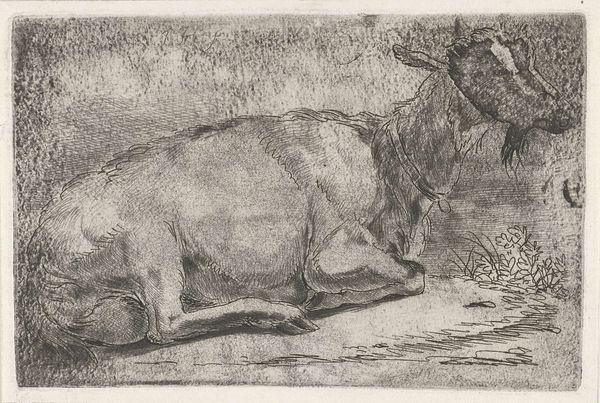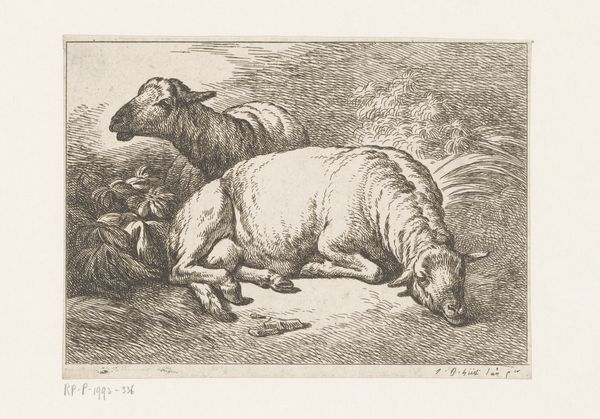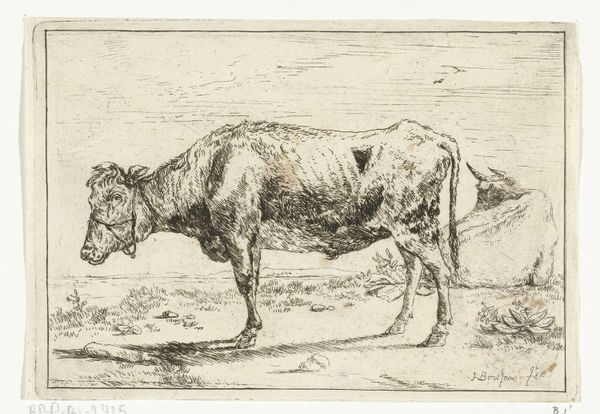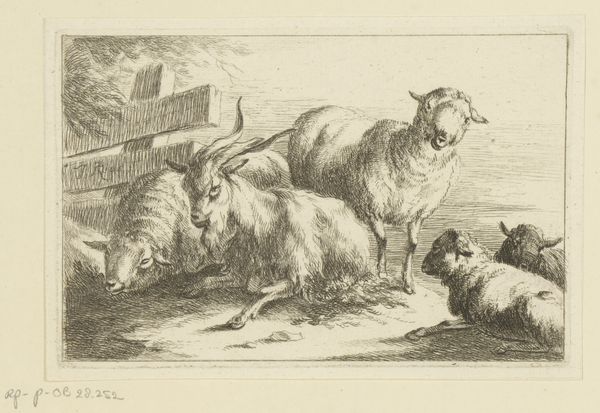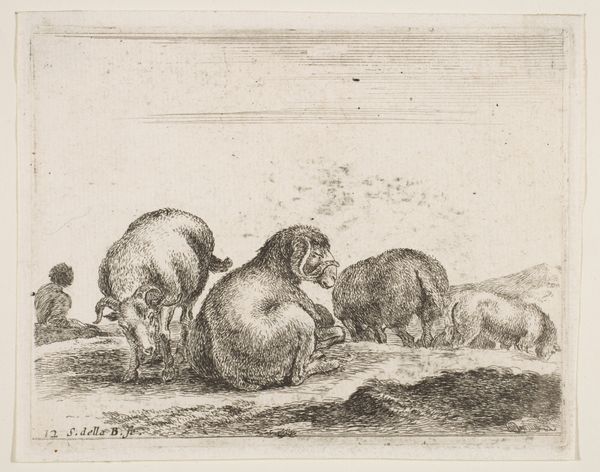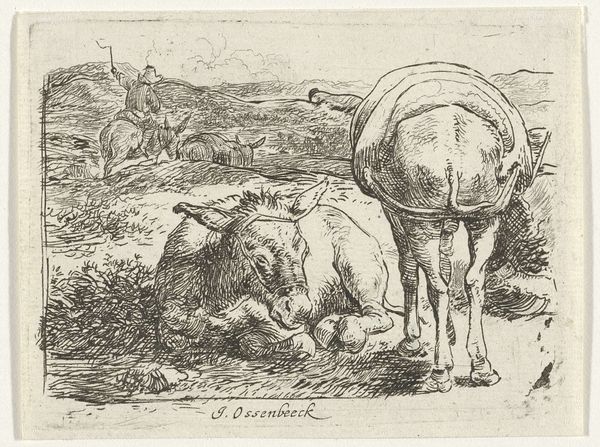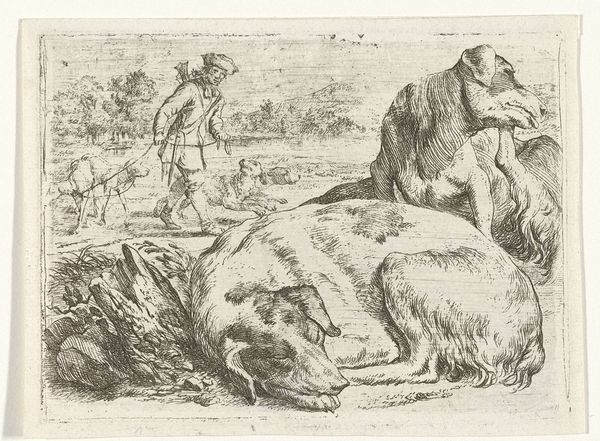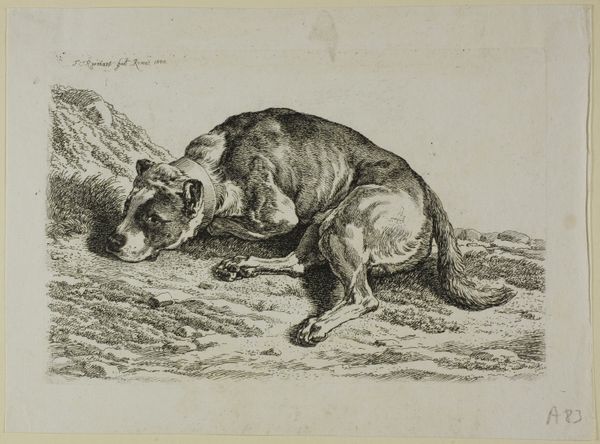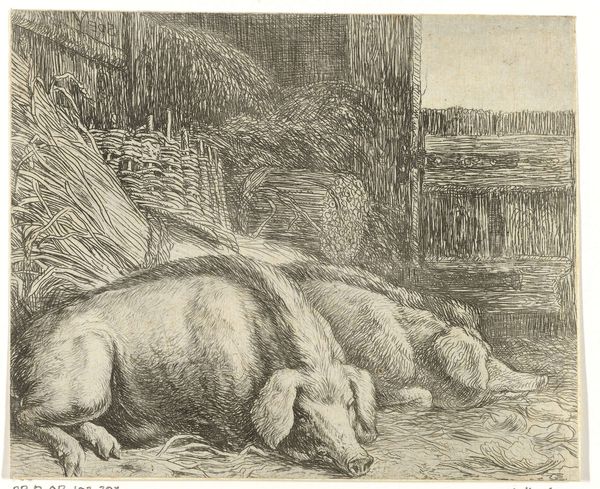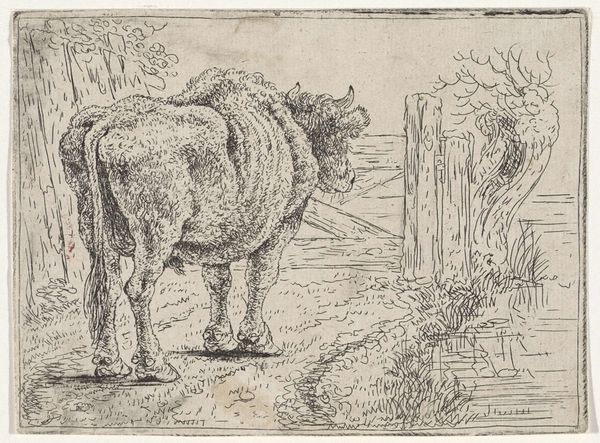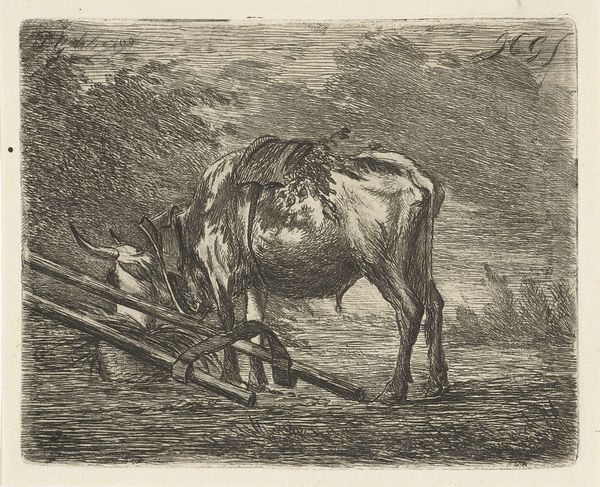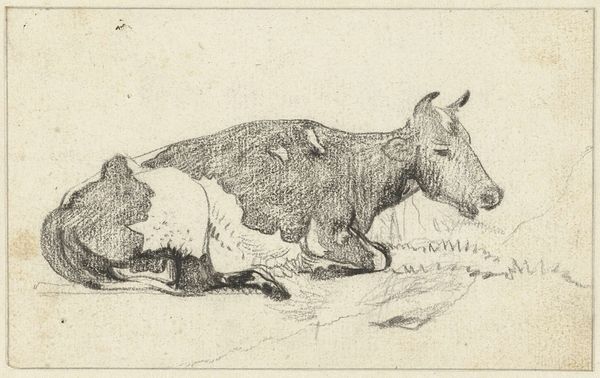
drawing, ink
#
drawing
#
ink drawing
#
landscape
#
figuration
#
ink
#
realism
Dimensions: height 91 mm, width 123 mm
Copyright: Rijks Museum: Open Domain
Editor: This is William Young Ottley’s "Twee Ossen" or "Two Oxen", made with ink around 1828. There's something really serene about the way these animals are rendered, almost monumental despite the humble material. What do you see in this piece? Curator: It presents a study in contrasts, doesn’t it? Note how Ottley employs hatching and cross-hatching techniques to sculpt the forms of the oxen. The standing ox, taut and angular, faces the other, which is fluid. There is an undeniable tension between stasis and kinesis; note the musculature. Does the prone animal, heavy and recumbent, not exude repose? Editor: Absolutely. The use of line seems to define the qualities of the work, particularly that difference in weight you pointed out. It's interesting how much the medium influences our perception. How do you think the materiality of ink drawing influences the artwork overall? Curator: Observe the deliberate inconsistency in line thickness, strategically used to define light and shadow. The economy of the medium forces a focus on pure form, on the essential structure. Without the allure of colour, Ottley coaxes depth and texture from simple strokes. The whiteness of the ground becomes as important as the density of ink. Are you suggesting a relationship between simplicity and truthfulness, perhaps? Editor: Possibly. I appreciate the way your formal analysis brought a new perspective. Looking again, I am drawn to the animalistic form with new eyes. Curator: Precisely! By attending closely to the formal elements, we are privy to a level of awareness which illuminates even a familiar theme.
Comments
No comments
Be the first to comment and join the conversation on the ultimate creative platform.

